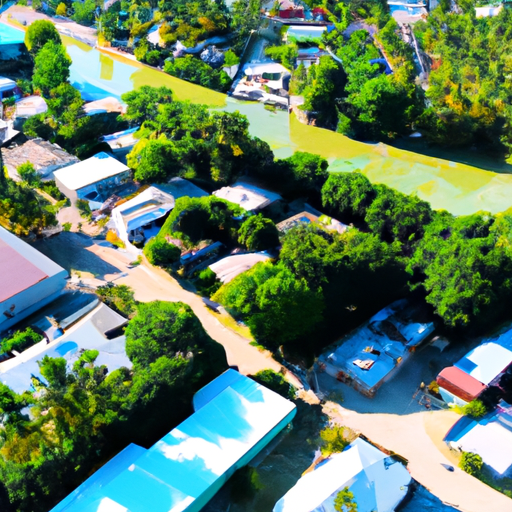Another miracle for Filipinas?

The Impact of Another Miracle for Filipinas on Women’s Empowerment
Another miracle for Filipinas?
The Philippines has long been hailed as the “Miracle of Asia” due to its remarkable economic growth and resilience. However, amidst this economic progress, there is still a pressing issue that needs to be addressed – women’s empowerment. Despite the country’s advancements, women in the Philippines continue to face various challenges that hinder their progress and limit their opportunities.
One of the key factors that contribute to the lack of women’s empowerment in the Philippines is gender inequality. Traditional gender roles and stereotypes still persist in Filipino society, which often relegate women to domestic duties and limit their participation in decision-making processes. This gender bias is deeply ingrained in the culture and is reflected in various aspects of Filipino life, including education, employment, and politics.
In terms of education, while there have been significant improvements in recent years, there is still a gender gap that needs to be addressed. According to the Philippine Statistics Authority, the literacy rate for women is slightly lower than that of men. This disparity can be attributed to various factors, including poverty, early marriage, and cultural norms that prioritize boys’ education over girls’.
Furthermore, women in the Philippines face challenges in the workforce. Despite their high educational attainment, women are often relegated to low-paying jobs and are underrepresented in leadership positions. The gender pay gap also persists, with women earning less than their male counterparts for the same work. This not only hampers women’s economic empowerment but also perpetuates the cycle of poverty and inequality.
In the political arena, women in the Philippines are significantly underrepresented. While the country has had two female presidents, the overall representation of women in politics remains low. According to the Inter-Parliamentary Union, women make up only around 30% of the Philippine Congress. This lack of female representation hinders the formulation of policies that address women’s issues and concerns.
However, amidst these challenges, there have been positive developments that offer hope for women’s empowerment in the Philippines. One such development is the passage of the Magna Carta of Women in 2009. This landmark legislation aims to eliminate discrimination against women and promote their participation and representation in all spheres of society. It provides a comprehensive framework for gender equality and women’s empowerment, encompassing various aspects such as education, employment, health, and political participation.
Another significant development is the rise of women’s organizations and advocacy groups in the Philippines. These organizations play a crucial role in raising awareness about women’s issues, providing support and resources, and advocating for policy changes. They empower women by giving them a platform to voice their concerns and fight for their rights.
Furthermore, there is a growing recognition of the importance of women’s empowerment in achieving sustainable development. The United Nations Sustainable Development Goals (SDGs) explicitly recognize gender equality as a key driver of development. The Philippine government has also committed to achieving these goals, including gender equality and women’s empowerment, by 2030.
In conclusion, while the Philippines may be hailed as the “Miracle of Asia” in terms of economic growth, there is still much work to be done in terms of women’s empowerment. Gender inequality remains a significant challenge that hampers women’s progress and limits their opportunities. However, with the passage of the Magna Carta of Women, the rise of women’s organizations, and the recognition of gender equality as a key driver of development, there is hope for a brighter future for Filipinas. It is crucial for all stakeholders – the government, civil society, and individuals – to work together to address these challenges and create an environment where women can truly thrive and contribute to the country’s progress.
Exploring the Role of Education in Another Miracle for Filipinas

Another miracle for Filipinas?
The Philippines has long been known for its resilience and ability to overcome adversity. From natural disasters to political turmoil, the Filipino people have always found a way to rise above and rebuild. However, one area where the country has struggled to make significant progress is in education. Despite efforts to improve the system, the Philippines still lags behind its Asian neighbors in terms of educational outcomes. But could education be the key to another miracle for Filipinas?
Education has long been recognized as a powerful tool for social and economic development. It has the potential to break the cycle of poverty, empower individuals, and transform communities. In the case of the Philippines, investing in education could be the catalyst for another miracle.
One of the main challenges facing the Philippine education system is access. Many children, especially those in rural areas, do not have access to quality education. This is due to a lack of schools, teachers, and resources. In order to address this issue, the government has implemented various programs and initiatives to improve access to education. These include the construction of new schools, the hiring of more teachers, and the provision of scholarships and financial assistance to students. While these efforts have made some progress, there is still much work to be done.
Another challenge facing the Philippine education system is the quality of education. Despite the increase in access, the quality of education remains a concern. Many schools lack the necessary resources and infrastructure to provide a quality education. Additionally, there is a shortage of qualified teachers, particularly in subjects such as math and science. In order to address these issues, the government has implemented reforms aimed at improving the quality of education. These include the development of a new curriculum, the training and professional development of teachers, and the provision of learning materials and technology. While these reforms have shown promise, there is still a long way to go.
In addition to access and quality, another important aspect of education is relevance. In today’s rapidly changing world, it is crucial for education to be relevant and responsive to the needs of the students and the demands of the job market. In the case of the Philippines, there is a need to align education with the skills and competencies required for the 21st century. This includes a focus on critical thinking, problem-solving, and digital literacy. The government has recognized this need and has implemented reforms to make education more relevant. These include the integration of technology in the classroom, the promotion of entrepreneurship and vocational education, and the strengthening of partnerships between schools and industries. While these efforts are commendable, there is still a need for further improvement.
In conclusion, education has the potential to be another miracle for Filipinas. By addressing the challenges of access, quality, and relevance, the Philippines can unlock the transformative power of education. However, this will require a sustained commitment from the government, as well as the support and collaboration of various stakeholders. Only by working together can Filipinas achieve another miracle through education.
Addressing Socioeconomic Challenges through Another Miracle for Filipinas
Addressing Socioeconomic Challenges through Another Miracle for Filipinas
The Philippines, a country known for its beautiful beaches and warm hospitality, has long been grappling with various socioeconomic challenges. From poverty and unemployment to inadequate healthcare and education, the Filipino people have faced numerous obstacles in their pursuit of a better life. However, there is hope on the horizon as a new initiative, dubbed “Another Miracle for Filipinas,” aims to address these challenges head-on.
One of the primary issues facing the Philippines is poverty. According to the World Bank, nearly a quarter of the population lives below the national poverty line. This staggering statistic highlights the urgent need for effective poverty alleviation measures. Another Miracle for Filipinas aims to tackle this issue by implementing comprehensive programs that focus on job creation, skills training, and access to financial services.
Unemployment is another pressing concern in the Philippines. The lack of job opportunities has forced many Filipinos to seek employment abroad, leading to the phenomenon of overseas Filipino workers. Another Miracle for Filipinas recognizes the importance of creating sustainable employment within the country. By investing in industries with high growth potential, such as technology and renewable energy, the initiative aims to generate new jobs and reduce the reliance on overseas employment.
In addition to poverty and unemployment, the Philippines also faces challenges in healthcare and education. Access to quality healthcare services remains limited, particularly in rural areas. Another Miracle for Filipinas seeks to address this issue by improving healthcare infrastructure, increasing the number of healthcare professionals, and implementing health education programs. By doing so, the initiative aims to ensure that every Filipino has access to affordable and quality healthcare.
Similarly, the education system in the Philippines is in need of significant improvements. Many schools lack basic facilities and resources, hindering students’ ability to learn effectively. Another Miracle for Filipinas aims to address this by investing in education infrastructure, providing teacher training programs, and promoting digital learning initiatives. By improving the quality of education, the initiative hopes to equip Filipino students with the skills and knowledge necessary to succeed in the modern world.
While the challenges facing the Philippines are undoubtedly daunting, Another Miracle for Filipinas offers a glimmer of hope. By addressing poverty, unemployment, healthcare, and education, the initiative aims to create a more inclusive and prosperous society. However, the success of this endeavor relies on the collaboration and commitment of various stakeholders, including the government, private sector, and civil society.
To ensure the sustainability of the initiative, Another Miracle for Filipinas also emphasizes the importance of good governance and transparency. By promoting accountability and integrity in public service, the initiative aims to build trust and confidence among the Filipino people. This, in turn, will foster an environment conducive to socioeconomic development.
In conclusion, the Philippines faces numerous socioeconomic challenges that have hindered the country’s progress for far too long. However, with the introduction of Another Miracle for Filipinas, there is renewed hope for a brighter future. By addressing poverty, unemployment, healthcare, and education, the initiative aims to create a more inclusive and prosperous society. Through collaboration, commitment, and good governance, Filipinos can overcome these challenges and pave the way for a better tomorrow.

